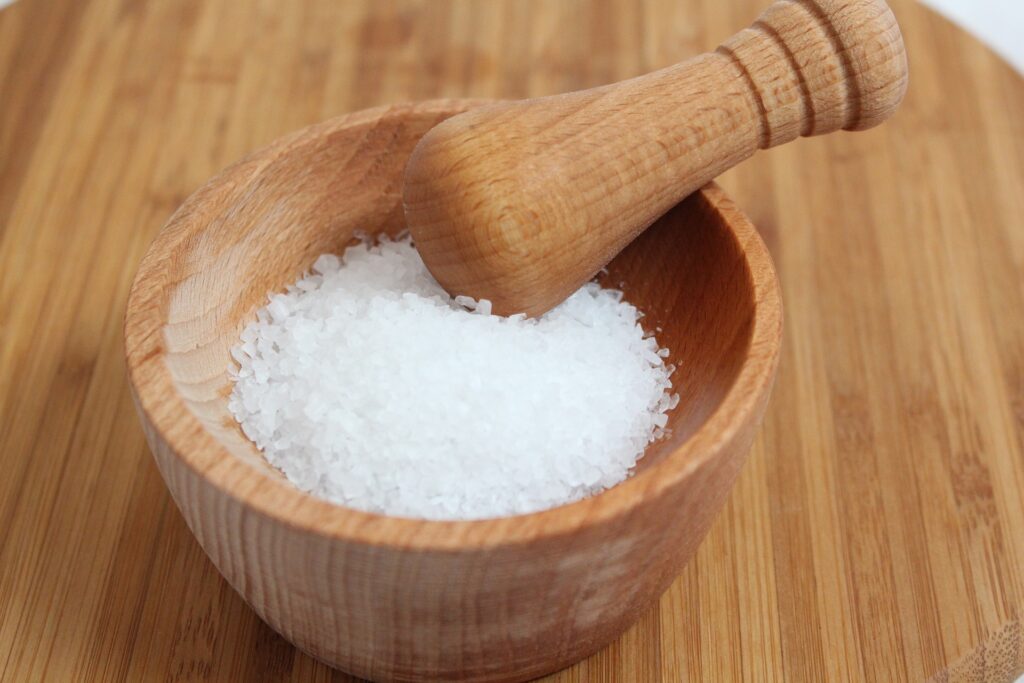100 years of salt iodination in Switzerland
In 1922, Switzerland was the first country in the world to introduce iodine in salt to protect the population from iodine deficiency, which is potentially dangerous to health and causes serious diseases such as cretinism and goiter.

Switzerland is located in a region with an iodine-poor ecosystem. In addition, some population groups, particularly pregnant and lactating women, still have an iodine deficient status.
A bit of history
In the past, it was not uncommon for people, especially in Alpine regions, to suffer from goiter (enlargement of the thyroid gland in the neck). Cretinism (stunted growth and mental retardation) was also common.
It took a long time to realize that these diseases were due to iodine deficiency. In 1922, surgeon Hans Eggenberger of Herisau (Appenzell Ausserrhoden) collected signatures to authorize the sale of iodized salt. He was convinced that adding iodine to salt was a promising solution to the problem. After a few years of salt iodization, the success of this measure was visible.
In the same year, the Federal Office of Public Health founded the Federal Goiter Commission. This commission turned to Schweizerhalle Salt Works (now Schweizer Salinen) for salt iodization. The initial concentration was 3.75 mg of iodine per kilogram of salt.
Over the past hundred years, clinical findings and data on the nutritional status of the Swiss population have led to a gradual increase in the concentration of iodine in salt. It is currently 25 mg of iodine per kilogram of salt.
Raimondo Pische – a life set on work and basics extremely attentive to the toxicological aspect
A strategy that works
In the past, severe iodine deficiencies occurred in Switzerland: in Alpine regions in particular, up to 90 percent of children suffered from an enlarged thyroid gland or goiter. Also common at that time was cretinism, a growth disorder that causes irreversible malformations and mental disabilities. To remedy this situation, Switzerland was the first country to introduce salt iodization 100 years ago. Enrichment of food salt with iodine is a low-cost measure and has proven very effective in combating these iodine deficiency diseases.
According to one study, iodized salt remains the main source of iodine in the diet of the Swiss population, especially through processed foods such as bread. However, the use of iodized salt in food production is optional, which is why it is important to continue to support its increased use in the diet.
Today
In our country, goiter and cretinism related to iodine deficiency have disappeared. The Federal Goiter Commission is called the Fluor Iodine Commission and is supported by the Swiss Academy of Medical Sciences.
In addition to the use of iodized salt in most Swiss households and in some processed products such as bread and the addition of iodine to animal feed, imports of naturally iodine-rich products ensure the supply of this nutrient.
Swiss soil is poor in iodine. Therefore, locally produced foods are also iodine-poor. Therefore, the FVO continues to monitor the iodine status not only of the general population and especially of school-age children, but also of at-risk groups: women of childbearing age, pregnant and lactating women. The latter have rather low iodine status, even insufficient compared to recommendations.What foods are rich in iodine?
Iodine is naturally present in fish and seafood, but it is not the main contributor. In the daily diet, bread is the main source of iodine. This is because 86 percent of bakers use iodized salt in the preparation of bread. Milk, dairy products and eggs can also be an interesting source of iodine if animals are fed iodine-enriched feed. Processed foods, if prepared with iodized salt, could also contribute to iodine intake. The use of iodized salt in these feeds is about 34%.
How can we ensure sufficient iodine intake?
Salt consumption should not be increased to improve iodine status! However, preference should be given to the consumption of iodized salt over non-iodized salt and the purchase of processed products containing iodized salt.
Varying your diet and including seafood (e.g., fish, seafood), dairy products, and eggs contributes to good iodine intake. If you are pregnant or breastfeeding and taking dietary supplements, make sure they contain iodine.

100 years of salt iodination
The SAMS Fluoride and Iodine Commission and USAV are organizing a symposium to mark 100 years of salt iodination in Switzerland. Lectures will be given on the history of salt iodination, the physiological importance of iodine, the situation in Switzerland and iodine in food. In addition, experts from nutrition, public health, medicine and agribusiness will address issues related to protecting the population from health problems related to iodine deficiency, as well as the challenges to overcome to protect future generations.
Source: blv.admin.ch





